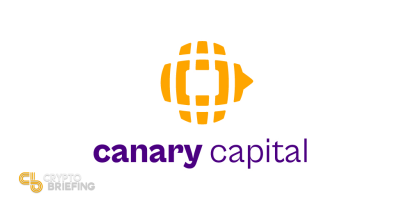Global crypto investment products have experienced a significant shift, as $147 million exited the funds last week, ending an almost $2 billion three-week net inflow streak, according to a recent report by CoinShares.
Source: Coin Shares
Asset managers such as BlackRock, Bitwise, Fidelity, Grayscale, ProShares, and 21Shares witnessed the reversal in inflows, suggesting a cautious approach among investors amid changing economic conditions. The outflows were led predominantly by Bitcoin-based funds, which saw net outflows of $159 million.
“Higher than expected economic data last week, reducing the probabilities for significant rate cuts are the likely reason for the weaker sentiment amongst investors,” CoinShares Head of Research James Butterfill said in a Monday report.
Regional Divergence in Crypto FlowsThe shift in investment shows the crypto market reaction to macroeconomic indicators. Short-bitcoin investment products benefited from declining bitcoin prices and attracted $2.8 million in net inflows, indicating some investors are hedging against potential downturns. Funds in the U.S., Germany, and Hong Kong dominated the negative flows, with losses of $209 million, $8.3 million, and $7.3 million, respectively.
Source: Coin Shares
Conversely, products based in Canada and Switzerland provided a silver lining, registering net inflows of $43 million and $34.9 million. This regional divergence underscores varying investor confidence levels across different markets.
Despite the outflows, trading volumes for global crypto investment products were up 15% for the week, reaching $10 billion. This increase occurred even as the broader crypto market experienced lower volumes, suggesting that institutional activity remains robust, according to Butterfill.
Bitcoin Rebounds then Falls Amid Liquidity DropBitcoin attempted to close the week above $62,500, significantly higher than the intra-week low of just under $60,000, according to Brave New Coin’s Bitcoin Liquid Index. At the time of writing, Bitcoin is trading at $62,005, marking a 1.67% fall in the last 24 hours. October, historically the strongest month for Bitcoin, has had a slow start; analysts anticipate that momentum could build in the coming weeks.
Source BNC Bitcoin Liquid Index
One potential catalyst for a market recovery is the expectation of monetary policy easing. The CME Group’s FedWatch Tool is pricing in a 97% probability that the Federal Reserve will cut rates by 25 basis points at their meeting scheduled for November 7. Such a rate cut is generally expected to boost risk-on sentiment, which could positively impact cryptocurrencies.
Another factor that could influence bitcoin’s price is the reduction of bitcoin held on centralized exchanges. Centralized exchanges now hold more than 2.8 million bitcoins, the lowest number since November 2018. A decrease in exchange reserves often reduces available liquidity, leading to increased volatility and potentially bullish price movements if demand rises.
The decline in exchange-held bitcoin suggests that investors are moving their holdings to long-term storage solutions, possibly indicating a bullish outlook over the long term. This trend might also reduce the immediate selling pressure on the market.
Ethereum-based products, which had only just broken a five-week streak of net outflows the week before, weren’t spared from the recent trend. They resumed net outflows of $28.9 million globally last week amid “lackluster” investor interest in the asset, according to Butterfill.
Ethereum’s Price Dynamics and Layer 1 Fees
Ethereum’s price saw a modest decrease of -0.35% during a low-volatility Tuesday trading session, trading around $2,430, according to Brave New Coin’s Ethereum Liquid Index. This fall followed selling pressure earlier in the week, which was partly fueled by geopolitical tensions in the Middle East. The conflict between Israel and Iran raised concerns among investors, leading to cautious market behavior.
Source: BNC Ethereum Liquid Index
The recent price movement raises questions about whether the correction trend will extend, mainly as Ethereum Layer 1 (L1) fees have recorded an all-time low. According to analytics firm IntoTheBlock, implementing EIP-4844, part of the Dencun upgrade, has reduced the cost of Layer 2 (L2) transactions by a factor of ten.
The sharp decline in L1 fees reflects the continuous growth of L2 solutions like Optimism and Arbitrum, which offer faster and more cost-effective transactions. While this development enhances Ethereum’s scalability, it has unintended consequences.
Due to lower L1 transaction costs, fewer fees are being burned, and the supply of ETH has entered an inflationary phase, reversing its prior deflationary trend. This shift means that more ETH is being added to the circulating supply than is being removed through fee burning. However, multi-asset investment products, offering exposure to a diversified basket of cryptocurrencies, bucked the trend by adding net inflows of $29.4 million.
Multi-Asset Products Gain Favor Among InvestorsThe resilience of multi-asset investment products in the face of market outflows indicates a growing preference for diversification. Investors are seeking exposure to a broader range of cryptocurrencies to mitigate risks associated with single assets. This strategy has led to the rise of multi-asset products, which now represent a significant portion of global crypto funds’ assets under management.
The Global Market Crypto Index (GMCI) 30, representing a selection of the top 30 cryptocurrencies, gained 1.5% over the past 24 hours to reach 118.20. However, it remains down approximately 5% over the past seven days. While the prospect of a Federal Reserve rate cut could invigorate risk assets, higher-than-expected economic indicators may dampen hopes for significant policy easing.
At the same time, structural factors such as the decreasing reserves of bitcoin on exchanges and the growth of Ethereum’s Layer 2 solutions present a complex picture. Investors and analysts will be watching upcoming developments closely, including central bank decisions, technological upgrades, and geopolitical events.















